
About Andrew Cusack
 Writer, web designer, etc.; born in New York; educated in Argentina, Scotland, and South Africa; now based in London.
Writer, web designer, etc.; born in New York; educated in Argentina, Scotland, and South Africa; now based in London. read more
News
Blogs
Reviews & Periodicals
Arts & Design
World
France
Mitteleuropa
Knickerbockers
Argentina
The Levant
Africa
Cape of Good Hope
Netherlands
Scandinavia
Québec
India
Muscovy
Germany
Academica
Felix Meritis
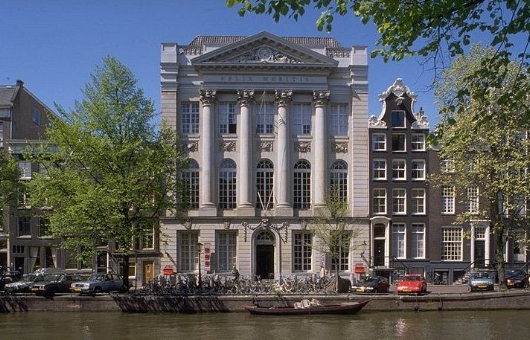
ONE OF MY FAVORITE handsome and dignified, and yet relatively small, buildings is the Felix Meritis on the Keizersgracht in Amsterdam. It has a long and interesting history to accompany the beauty of its design. The ‘Felix Meritis’ was a learned society founded by a number of prominent burghers of Amsterdam in 1777 for the promotion of the arts and sciences in their city. Its name is Latin for ‘fortunate (or more literally, ‘happy’) by merit’. Ten years later, the Felix Meritis purchased four narrow homes on the Keizersgracht and constructed a building, designed by the architect Jacob Otten Husly, on the site.
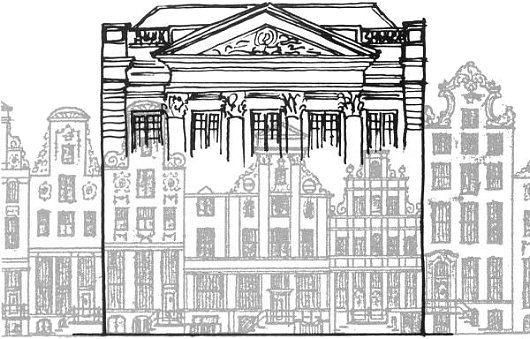
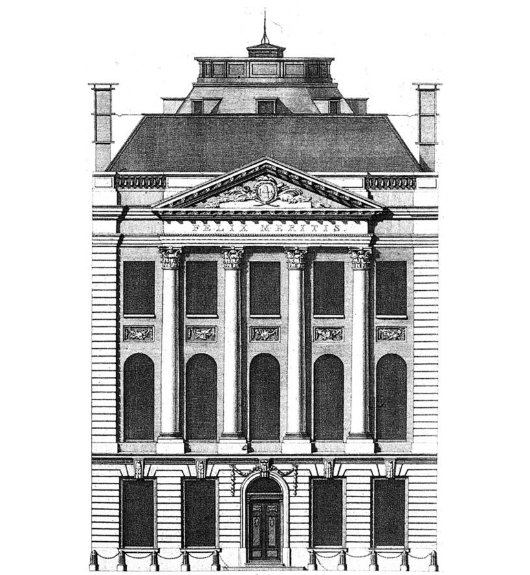
The classical façade is composed of five bays, the central three of which comprise a portico topped by a triangular pediment. The entrance hall leads to the central staircase, with the oval-shaped concert hall, the largest room in the building, just beyond. Ascending the staircase, the Zuilenzaal (Hall of Columns) sits above the foyer and forms the principal storey of the façade. Rising another storey, the oval lecture hall rests atop the concert hall below. Here physical experiments were exhibited, and human dissections were practiced. Finally, up another flight of stairs and situated above the Zuilenzaal was the picture room were nudes were sketched or painted and where works of art were exhibited.
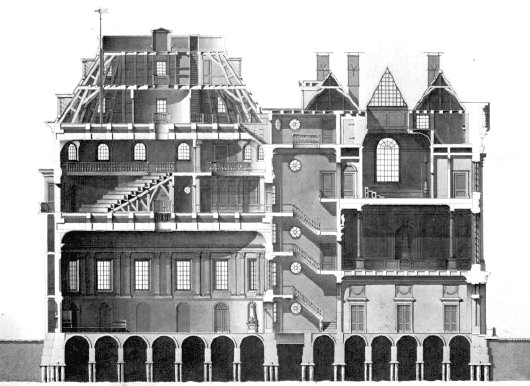
The quarters of the Felix Meritis was intended to be a ‘Temple of Enlightenment’, and for a century played host to musical concerts, literary events, and debates. Beethoven’s Ninth and Berlioz’s Symphonie fantastique had their Netherlandic premiers in this concert hall.
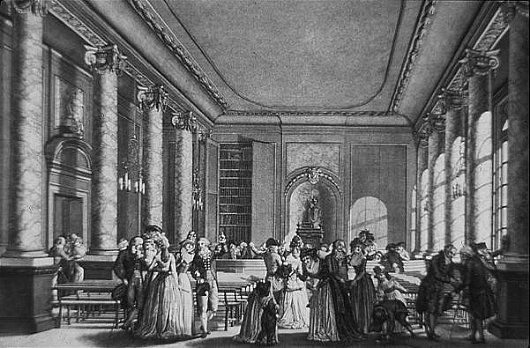
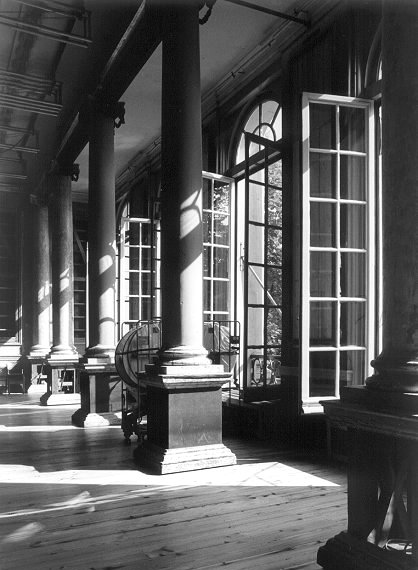
The society met at the hall until 1888, when the publishing firm of Holdert and Co. purchased the building and moved in. Sadly, the alterations made by the printers destroyed or obstructed a great deal of the building’s interior. In 1932, a devastating fire ravaged the façade and damaged the rooms toward the front of the building.
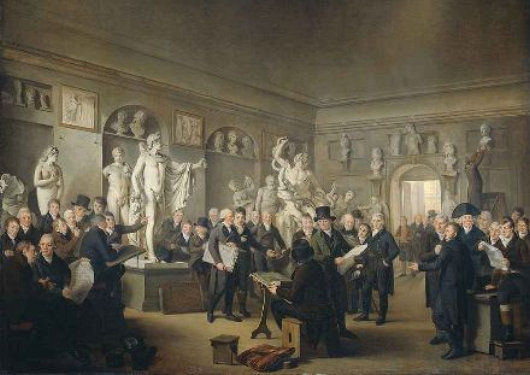
The picture rooms of the Felix Meritis.
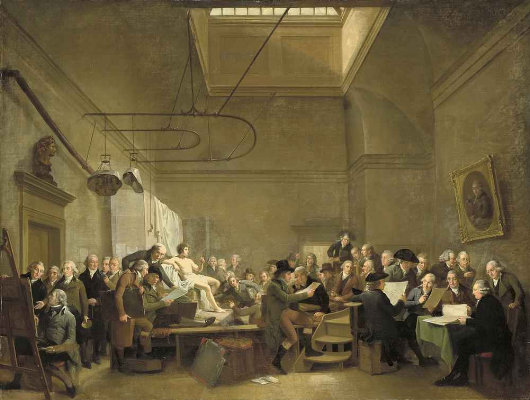
 After the Second World War, the Communist Party of the Netherlands took over the building, using it as their headquarters and the offices of their newspaper, De Waarheid. While their ideology was contemptible, one must commend these enemies of all that is good and holy on their taste in choosing such a comely structure as the base for spreading their godless ideology throughout the kingdom.
After the Second World War, the Communist Party of the Netherlands took over the building, using it as their headquarters and the offices of their newspaper, De Waarheid. While their ideology was contemptible, one must commend these enemies of all that is good and holy on their taste in choosing such a comely structure as the base for spreading their godless ideology throughout the kingdom.
During the 1960s, the Communist HQ became the scene of numerous ‘hippie’ events, including performances by such prominent Dutch countercultural figures as Liesbeth List, Jenny Arean, Freek de Jonge, and Ramses Shaffy, who founded his eponymous theater group in the building. The Shaffy Theater was involved in all manner of experimental theater, music, dance, and even mime, and took the building off the Communist Party’s hands when the Reds left the Felix Meritis in 1981.
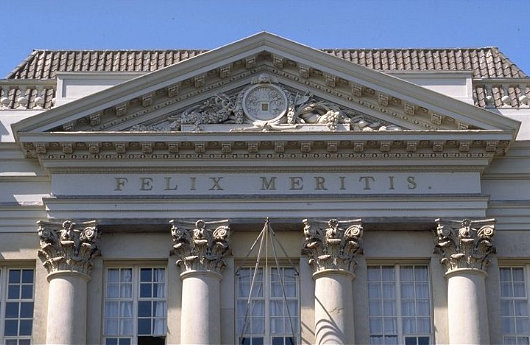
When Shaffy’s group lost its government grant in 1988, the building reverted to the local government. In 1992, the City of Amsterdam arranged a long-term lease to a specially created body, the Felix Meritis Management Foundation, to return the Felix Meritis to its original purpose as a center for learning and culture.
In 1998, the foundation began a restoration of the interior which is, at this point, still incomplete. The restoration which has taken place, however, has been suitably reserved. A respectable dilapidation exists in much of the detailing, showing the building’s age rather than creating a false atmosphere of “looks just as new” which prevails in so many over-restorations.
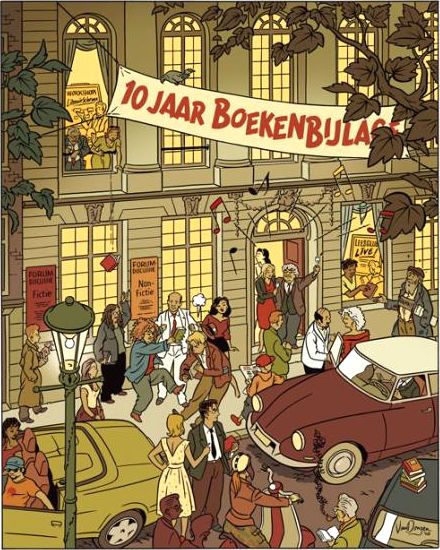
A cartoon, in the style of Hergé, depicting the book festival at Felix Meritis. The event commemorates of the tenth anniversary of NRC Handelsblad’s books section.
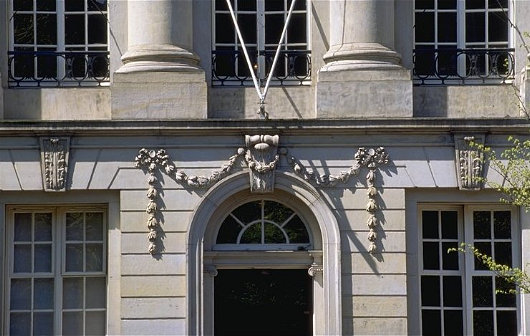
Today the Felix Meritis is home to a number of projects and institutions. There is Kunstkanaal, the arts television station of the Netherlands, the Amsterdam-Maastricht Summer University, and the Forum voor Europese Cultuur. Additionally, Felix Meritis organizes programs such as ‘Gulliver’, which brings writers, academics, filmmakers, composers, and architects together to debate the future of Europe, and the annual Nacht van de Filosofie which took place this past Saturday (and on into the early hours of Sunday, one should note). Meanwhile, it publishes the Felix Meritis Papers in English, and the Felix Meritis Theatre Journal in Dutch, English, French, and German. In addition to all these, numerous other cultural and social events are held in the two-hundred-year-old building. It is a tribute to the Dutch that they have resurrected the dead tradition of the Felix Meritis as it was first intended: a place where artists, scientists, and philosophers converge and where the healthy exchange of ideas can continue.
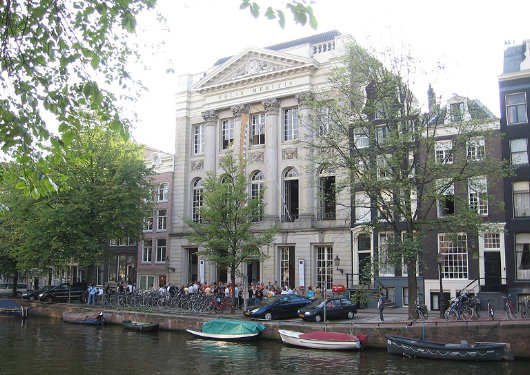
Search
Instagram: @andcusack
Click here for my Instagram photos.Most Recent Posts
- Teutonic Takeover March 10, 2025
- Katalin Bánffy-Jelen, R.I.P. March 3, 2025
- Substack Cusackiensis March 3, 2025
- In the Courts of the Lord February 13, 2025
- American Exuberant February 10, 2025
Most Recent Comments
Book Wishlist
Monthly Archives
Categories



No Easter note. How can it be?
Well, Happy Easter Mr Cusack.
Long time reader, etc,
cawp
Thanks for all the great historical info. on the Felix Meritis building!
Thank you again for one of your spectacular and interesting architectural history posts, Andrew. Just wondering whether you have read Alain de Botton’s most recent book on the philosophy of architecture? Every budding ‘modernist’ should perhaps read it before they continue their educations…
This is an exemplary website that tells a clear story and is beautifully illustrated. What is more, it is very well written (or well translated?), which is rare in websites. Coming across this website has brightened up my day considerably!